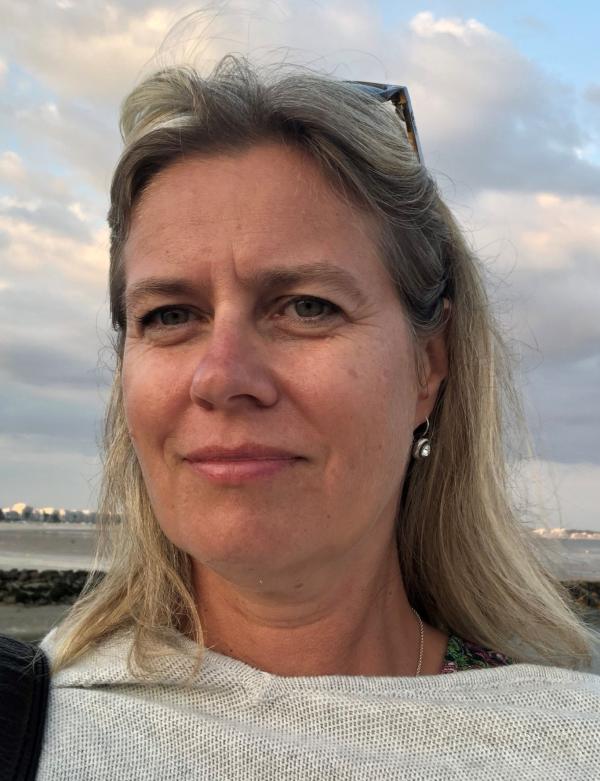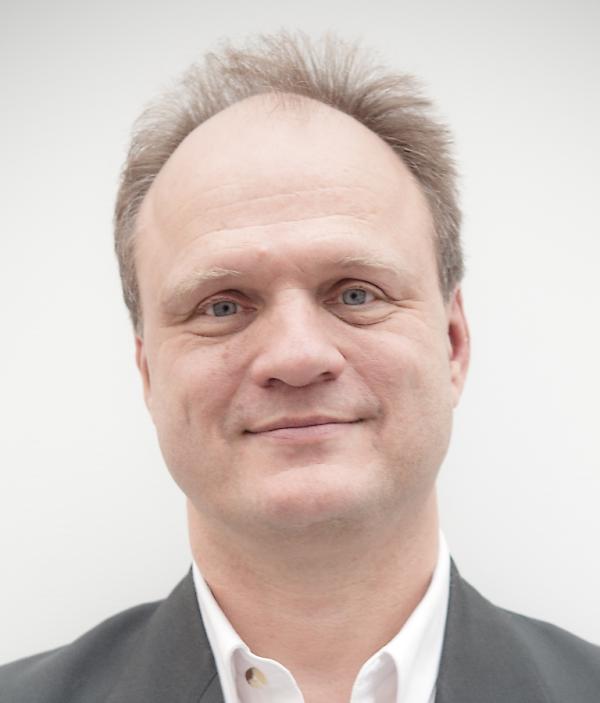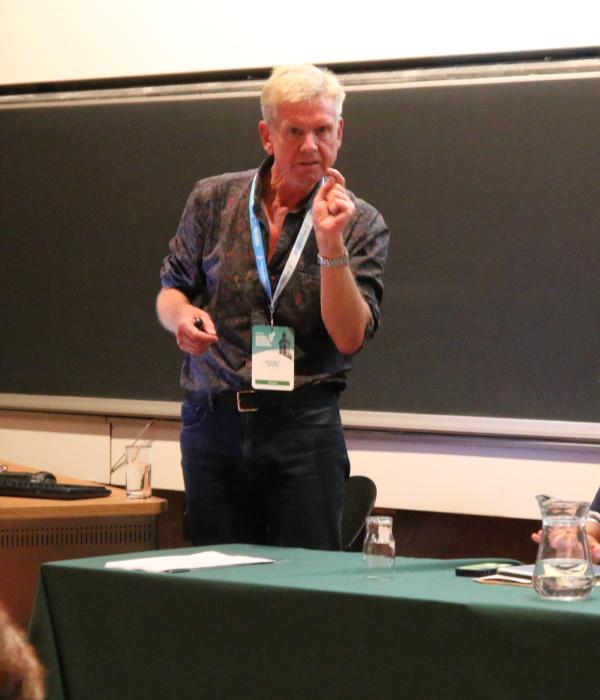The #MeToo movement has helped to highlight the incidence of sexual harassment in Nordic academia with local hashtags such as #MeTooAkademia in Norway and #Akademiuppropet in Sweden.
But has this led to more research on sexual harassment within the research sector itself?
The Swedes are out in front
Sweden is currently the leader in sexual harassment research in the Nordic countries, while Norway lags behind its larger neighbour to the east. In December 2017, the Swedish Government instructed the country’s universities and university colleges to strengthen and report on their efforts to combat sexual harassment. In addition, the Swedish Council for Higher Education was asked to document the work to prevent sexual harassment, compile an overview of existing reporting systems and give examples of best practice, all from higher education institutions. Their findings will be presented in a report, and the planned launch date is scheduled for 8 March 2019.
“We see that there is extremely little Nordic research on sexual harassment”
Fredrik Bondestam, Research Coordinator at the Swedish Secretariat for Gender Research at the University of Gothenburg, has been studying gender equality in academia and issues of sexual violence and sexual harassment for many years. Now he is involved in the Swedish Council’s sexual harassment work in which he, together with his colleagues at the Swedish Secretariat for Gender Research, will provide a research-based overview of how sexual harassment can be prevented.
“We have done a systematic review of all the existing research on sexual harassment in academia internationally and analysed the publications that focus on prevention efforts in particular.”
The project was presented at the 10th European Conference for Gender Equality in Higher Education in August in Dublin, together with representatives from the Swedish Council for Higher Education.
Swedish review of international research
In addition, the secretariat has been commissioned by the Swedish Research Council to review all of the international research on sexual harassment in academia. The results will be presented in October, but the researchers have already made some remarkable findings, also from a Norwegian perspective.
“We have one chapter in the publication that deals with Sweden and one that looks at the other Nordic countries. We see that there is extremely little Nordic research on sexual harassment,” said Bondestam at the conference.
He says that Norway and Denmark have conducted even less research in this area than Sweden has.
“We found a total of 107 research articles based on the criteria we established for the research overview. The articles were written from 1966 to 2018. Of these, 66 are Swedish, while the remaining 41 are divided among the other Nordic countries. Only a few of them have been published in peer-reviewed journals.”
Then he continues:
“Of course there are a number of publications on sexual harassment in academia in the Nordic countries, such as handbooks, reports and student papers, but we are not analysing those.”
National working group will study Norwegian academia
Unlike in Sweden, however, the Norwegian Government has not made a similar request of Universities Norway (the Norwegian counterpart of the Swedish Council for Higher Education), and the Research Council of Norway has not allocated funding for research on sexual harassment.
In the wake of the Norwegian #MeToo movement, the Minister of Children and Equality Linda Hofstad Helleland called a meeting in January of this year to get expert advice from a wide range of sectors about the national effort to combat sexual harassment.
Heidi Holt Zachariassen from the secretariat for the Committee for Gender Balance and Diversity in Research (the KIF Committee) attended the meeting and called for more research on “effective measures for prevention and cultural change in organizations where harassment occurs”.

While no research funding has been granted so far, an important step in the Norwegian efforts was taken when the working group known as UHRMOT was established this year. The task of the group, which was appointed by the board of Universities Norway, is to document and prevent sexual harassment and ensure that effective systems are in place for reporting and following up bullying and harassment of employees and students.
Need to know the extent of the problem
The working group is developing an employee survey that will be sent to all Norwegian universities and university colleges, according to the group’s chair, Rector Frank Reichert of the University of Agder.
“The main purpose of the survey is to document the extent of bullying and sexual harassment in Norwegian academia. Our intention is that it will be sent to all employees. We want to know more about bullying and harassment of employees,” he explains.
“We found out that only 9 of 24 websites had sufficient information about sexual harassment and reporting procedures”
In the the coming months, the working group will work with the framework of the survey, including what questions will be asked and how they will be formulated.
“Then, when we have determined what the survey will look like, we will hold a workshop for the sector and invite all the personnel directors to ensure that the survey has a contact point at each institution,” says Reichert.
In addition to the survey, another task of the UHRMOT working group is to conduct competence development by holding conferences and seminars, offering guidance and providing information. According to Reichert, concepts such as a “sexual code of conduct” will be important in this context.
Wants better reporting systems
Eight months after the first #MeToo hashtag was posted on Twitter, new cases are continuing to come to light. In the beginning of September, it became known that at least one report of sexual harassment has been submitted to the Faculty of Engineering at the Norwegian University of Science and Technology (NTNU), and the following week, the same university launched a #MeToo icon on its website for reporting sexual harassment. Moreover, in August several Norwegian newspapers published new information about sexual harassment in the arts in Norwegian academia. Six employees in Norwegian fine and performing arts programmes have resigned or lost their jobs in the course of one year due to reports of sexual harassment.

In addition to the survey and competence development measures, UHRMOT will ensure that effective reporting systems are in place. As part of its work in this area, the working group has already reviewed the websites of 24 higher education institutions.
The review is based on the assumption that a student or employee wants to find information on an institution’s website about how to report bullying or harassment. Both the website’s internal search engine and Google were used in the review. A search was also performed on the website’s sidebar.
The results, which were presented in August, show that there is great room for improvement.
“We found out that only 9 of 24 websites had sufficient information about sexual harassment and reporting procedures. The other 15 websites had no such information and no means of reporting an incident. Either they didn’t have the information needed or you had to log in to find it.”
Reichert says that the working group will soon announce its recommendation that such information should made available to the public.
“This is extremely important. If you are a former student or employee, for example, you can’t submit a report because you can’t log in. It’s also important that future students and employees can find information about how the institution deals with sexual harassment,” says Reichert.
The concept for the survey will be ready by the end of this year, and the documentation will be completed in May 2019.
Research needed to bring about change
Bondestam of the Swedish Secretariat for Gender Research praises the efforts of UHRMOT to document the extent of sexual harassment in academia.
“The Swedish Council for Higher Education works with measures and prevention, but not with surveying the extent of the problem. We don’t know how much harassment occurs in Swedish academia, so it’s critical that Norway takes the lead in this area,” he says.
Bondestam adds that it will be crucial to follow up with research in Norway as well and that a survey alone is not enough.
Now UHRMOT, in cooperation with the KIF Committee, is taking action. In June, the KIF Committee sent a letter to the working group stating that a survey does not do enough to create the knowledge base that the sector needs. The committee also believes that “a research project is necessary to understand why harassment occurs and what mechanisms are at play in Norwegian academia”.
“We have listened to the KIF Committee’s input, and now we want to send a joint letter with KIF to the Research Council to inform them of the need to set aside research funding to create change,” explains Reichert.
“The time is ripe for more research on sexual harassment in academia and exposure to sexual harassment”
Heidi Holt Zachariassen of the KIF secretariat is calling for a greater commitment and willingness to set aside funding, both in the Ministry of Education and Research and at the Research Council.
“The figures from the review of Nordic research by the Swedish Secretariat for Gender Research show that research in this field is extremely limited. In Norway, we are still at the talking stage when it comes to funding research on sexual harassment,” says Zachariassen.
The KIF Committee recently held its annual meeting with the Research Council, and will soon meet with the Ministry of Education and Research. Sexual harassment and the need for more research are on the agenda for both meetings.
“We want to see the revised national budget in the autumn include funding that can be allocated to research in this area. Another option is to set aside a lump sum for the Research Council’s 2019 budget that will go to research on sexual harassment in academia,” says Zachariassen.
“The time is ripe”
Fredrik Bondestam says he is convinced that new research policy initiatives are on the horizon in both Norway and Sweden.
“The time is ripe for more research on sexual harassment in academia and exposure to sexual harassment. I think that many people now want to see action being taken in this area,” he says.

Øystein Gullvåg Holter, a gender researcher who sits on both the KIF Committee and the UHRMOT working group, hopes that Norway and Sweden will have the opportunity to cooperate on research projects that look at sexual harassment in academia. He took part in a networking meeting for European researchers on sexual harassment at the conference in Dublin in August. The efforts to prevent sexual harassment in the sector was one of the main themes of the conference, and the Swedes were at the forefront in these conversations as well.
Bondestam supports Gullvåg Holter’s proposal for a Norwegian-Swedish collaboration.
“It would be interesting to do comparative studies of Norway and Sweden. For example, we could compare how career pathways and sexual harassment are connected in the two countries,” says Bondestam.
“We can also study the prevention efforts in the two countries so we can gain strength from each other and make progress,” he says.
Translated by Connie Stultz.
In the wake of the #MeToo movement, the Nordic countries have launched various measures to increase knowledge about sexual harassment in academia.
Here are some of the steps being taken in the region:
Norway:
At the request of various groups, including the KIF Committee, to implement measures to prevent sexual harassment in the research sector, the UHRMOT working group was appointed this year by the board of Universities Norway. The group is now preparing a survey to document the extent of bullying and sexual harassment at Norwegian universities and university colleges.
UHRMOT and the KIF Committee see a need for more research on the reasons for sexual harassment and will write a joint letter to the Research Council about this. The need to set aside funding for research on sexual harassment is on the agenda of the KIF Committee’s meetings with the Research Council and the Ministry of Education and Research in September. Read the agenda for the meeting with the Ministry of Education and Research here and with the Research Council here (in Norwegian only).
Sweden:
The Swedish Council for Higher Education is documenting how higher education institutions in Sweden are working to prevent sexual harassment.
The Swedish Secretariat for Gender Research at the University of Gothenburg will assist the Swedish Council with its work by compiling a research-based overview of how sexual harassment can be prevented. The secretariat will also conduct a review of all international research on sexual harassment in academia.
Denmark:
Danish universities and the National Union of Students in Denmark are conducting a survey of students’ experiences of sexual harassment at the universities.
The survey was begun in early May, and the results are expected to be published very soon.
There is no funding for research on sexual harassment.
Finland:
The study “How to erase sexual harassment – feedback from Finnish academia” was carried out by Eija Tuominen and the University of Helsinki.
In March, they sent a questionnaire to employees at Finnish universities and used it to document the extent of sexual harassment and obtain feedback on reporting.
The study was presented at the 10th Conference for Gender Equality in Higher Education in Dublin in August. Read about the study here.
Iceland
As part of the #MeToo movement, the Icelandic women’s network “Women in Research” submitted several demands last year related to the prevention of sexual harassment in academia.
The rector of the University of Iceland responded to their demands by launching a number of measures at the university.
One of the four measures is that the university will allocate funding for more knowledge and research on sexual harassment, sexual violence and women’s health. The research includes both quantitative and qualitative studies, and will document the situation of both students and employees at the university.
Sources: Swedish Secretariat for Gender Research, KVINFO, University of Helsinki, University of Iceland.


